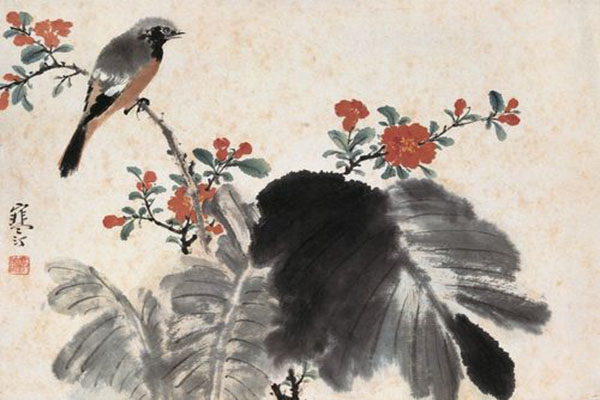Art has always been an integral part of human expression, allowing artists to convey their thoughts, emotions, and cultural heritage through visual representation. In this post, we’ll explore the differences between Chinese and Western painting traditions, highlighting their unique characteristics and influences.
Key Characteristics of Chinese Paintings
Chinese painting has a rich history, dating back to the Neolithic era, and has undergone various transformations over time. Some of the key characteristics of Chinese paintings include:
Historical Background
Chinese painting has been deeply influenced by the country’s cultural and philosophical traditions. Many of the early Chinese paintings were inspired by Taoist and Buddhist beliefs, emphasizing the harmony between nature and the human world.
Painting Materials and Techniques
Chinese paintings are typically created using ink and brush on paper or silk, with a focus on fluid and spontaneous brushstrokes. The brush is held upright, allowing for a greater range of movement and expressiveness. Additionally, Chinese painting often incorporates calligraphy, with artists using their brushstrokes to create meaningful symbols and characters.
Symbolism and Meaning
Chinese paintings often contain symbolic references to nature, mythology, and philosophical concepts. For example, the lotus flower is a common symbol of purity and enlightenment, while the dragon represents power and good fortune.
Brushwork and Calligraphy
Chinese paintings place a strong emphasis on brushwork and calligraphy, with artists using their strokes to convey a sense of movement, texture, and emotion. Calligraphy is often incorporated into the painting, allowing for a deeper connection between the written and visual arts.
Use of Negative Space
Chinese painting often uses negative space, leaving areas of the paper or silk blank to create a sense of balance and harmony. This approach encourages viewers to focus on the essential elements of the painting and appreciate the interplay between the empty and the full.
Focus on Nature and the Natural World
Chinese paintings often depict landscapes, birds, flowers, and animals, with a focus on capturing the essence of their subject rather than their physical appearance. This approach allows for a greater sense of connection between the viewer and the natural world.
Examples of Famous Chinese Paintings
Some of the most famous Chinese paintings include “Along the River During the Qingming Festival” by Zhang Zeduan, “Dwelling in the Fuchun Mountains” by Huang Gongwang, and “One Hundred Horses” by Lang Shining.
Key Characteristics of Western Paintings
Western painting has also undergone various transformations over time, influenced by cultural and artistic movements such as the Renaissance, Impressionism, and Abstract Expressionism. Some of the key characteristics of Western paintings include:
Historical Background
Western painting has been shaped by various cultural and historical movements, including the rise of Christianity and the humanistic ideals of the Renaissance. Western painting has also been influenced by scientific discoveries such as linear perspective and the study of anatomy.
Painting Materials and Techniques
Western painting often uses oil or acrylic paints on canvas, with a focus on precise and realistic representation. The use of brushes and other tools allows for a high level of detail and precision in the depiction of human figures, landscapes, and still life.
Use of Linear Perspective
Western painting places a strong emphasis on linear perspective, allowing artists to create the illusion of depth and three-dimensional space on a two-dimensional surface. This approach allows for a greater sense of realism and accuracy in the representation of the world.
Representation of Reality
Western painting often focuses on the representation of reality, capturing the physical appearance of objects and people with a high level of detail and accuracy. This approach encourages viewers to appreciate the beauty and complexity of the world around them.
Emphasis on Individualism and Self-Expression
Western painting often emphasizes individualism and self-expression, allowing artists to express their unique perspectives and experiences through their art. This approach encourages viewers to connect with the artist on a personal level and appreciate the diversity of human experiences.
Focus on Human Figures and Emotions
Western painting often depicts human figures and emotions, with a focus on capturing the complexity and diversity of the human experience. This approach allows for a greater sense of empathy and understanding between the viewer and the subject of the painting.
Examples of Famous Western Paintings
Some of the most famous Western paintings include “Mona Lisa” by Leonardo da Vinci, “The Starry Night” by Vincent van Gogh, and “Les Demoiselles d’Avignon” by Pablo Picasso.
Comparison of Chinese and Western Paintings
While there are many differences between Chinese and Western paintings, both traditions have influenced and inspired each other over time. Here are some of the key differences and similarities between the two traditions:
Differences in Subject Matter and Themes
Chinese painting often focuses on nature and the natural world, while Western painting often focuses on human figures and emotions. Chinese painting also incorporates symbolic and philosophical references, while Western painting often emphasizes realism and accuracy in the representation of the world.
Differences in Composition and Form
Chinese painting often uses negative space and a more abstract approach to composition, while Western painting often uses linear perspective and a more realistic approach to composition. Chinese painting also emphasizes calligraphy and brushwork, while Western painting emphasizes color and texture.
Differences in Use of Color and Shading
Chinese painting often uses monochromatic or limited color palettes, with a focus on the expressive use of ink and brushwork. Western painting often uses a wider range of colors, with a focus on creating the illusion of light and shadow.
Differences in Cultural and Philosophical Influences
Chinese painting has been deeply influenced by Taoist, Buddhist, and Confucian beliefs, while Western painting has been influenced by Christianity, humanism, and scientific discoveries. These different cultural and philosophical influences have shaped the themes, techniques, and subject matter of each tradition.
Examples of Cross-Cultural Exchange and Influence
Despite their differences, Chinese and Western painting traditions have also influenced and inspired each other over time. For example, the use of linear perspective in Western painting was inspired by Chinese artists who used it to create the illusion of depth and space in their landscapes. Similarly, Chinese artists were inspired by the realism and precision of Western paintings, leading to the development of new techniques and approaches.
Conclusion
Chinese and Western painting traditions offer unique perspectives on the world and the human experience, highlighting the diversity and complexity of human expression. While there are many differences between the two traditions, they have also influenced and inspired each other over time, leading to new forms of art and cultural exchange. By appreciating the unique characteristics and influences of each tradition, we can gain a deeper understanding of our shared cultural heritage and the power of art to connect us across time and space.





